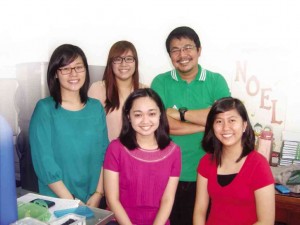Ultimate in recycling: Pricey coffee from cat’s waste
The aroma of the most expensive coffee in the world has perked up the chemistry department of De La Salle University on Taft Avenue.
The department’s faculty members and students have been studying the properties of coffee beans eaten and excreted by the Philippine civet cat, alamid, to find out what makes it so special.
Researchers visit farms in Batangas and Cavite and bring back samples of kape alamid, coffee produced from the cat’s waste, to the chemistry laboratory in Manila to try to find out the distinct characteristics that make it attractive to drinkers and sellers.
Kape alamid sells from P250 to P500 per cup or P2,500 to P5,000 a kilo.
“It’s kind of exotic. Tae ito, e (This is fecal matter),” Emmanuel Garcia, chemistry assistant professor, told the Inquirer.
Article continues after this advertisementGarcia said that unlike cheaper brands that could be mass-produced and sold in large volumes, the supply of the exotic coffee was very limited.
Article continues after this advertisement“You can’t pressure the animals to do more than what they can. They are so few and [are an] endangered species. The harvest of beans is seasonal,” he said.
The nocturnal civet cats, though carnivorous, like the sweet taste of red coffee cherries. In the morning, when the animals are asleep, farmers collect the beans in their waste and store them for a certain period. The beans are then washed thoroughly to remove the smell, then sun-dried, air-dried and roasted.
Garcia said the Indonesian kopi luwak was harvested from animals in captivity and did not get the thorough washing given to the Philippine variety. In the Philippines, animals that produced the beans were wild.
The 41-year-old chemist said that since animals in captivity ate and lived under duress, their digestive matrix was different from that of an animal in the wild.
The different circumstances and dietary systems affect the coffee, he said.
High caffeine content
“Our initial finding, although not yet conclusive, is that, if the coffee comes from alamid, the caffeine content is high and the vitamin E and mineral contents are low,” the professor said.
“If you are after antioxidants (believed to lower the risk of cancer, heart disease and memory loss), that is bad news.”
But Garcia pointed out that “the primary reason for drinking coffee is the aroma, as it [provides] stimulation when working and studying, although it must be taken in moderation due to its caffeine content.”
The La Salle study, which started in 2008, aimed to find out the chemical compositions of kape alamid, from the aroma to solubility, Garcia said.
They were doing statistical analysis and sensory evaluation, he said, to see if there was really a difference between kape alamid and ordinary coffee.
Garcia said every study they completed raised more questions than answers, so their research was continuing.
He said past and present students were participating in the studies. Stephanie Chan studied solubles; Adi Domingo, volatiles; Angie Tavera, overall aroma; and Ella Ong, protein analysis.
Tavera found that the aroma actually consisted of two things—retronasal and orthonasal stimulations.
In retronasal stimulation, odor compounds traveled through the internal nares or nostrils located inside the mouth, while in orthonasal, the odor passed through the external nares.
“But while we are concerned with the chemical makeup of this coffee, we also want to see the psychological aspect—on the part of drinkers—[and check] satisfaction levels. Like, if I pay P500 [for coffee], is it worth it?” Garcia said.
He admitted that, as far as aroma was concerned, there was not a lot of difference between ordinary coffee and kape alamid, except perhaps that the latter smelled soily or earthy and chocolatey.
“I tasted it in 2005 in Tagaytay City and I have been a coffee drinker since then,” said the professor, who has been teaching chemistry for 19 years at De La Salle.
Photos by Santiago R. Alcantara

